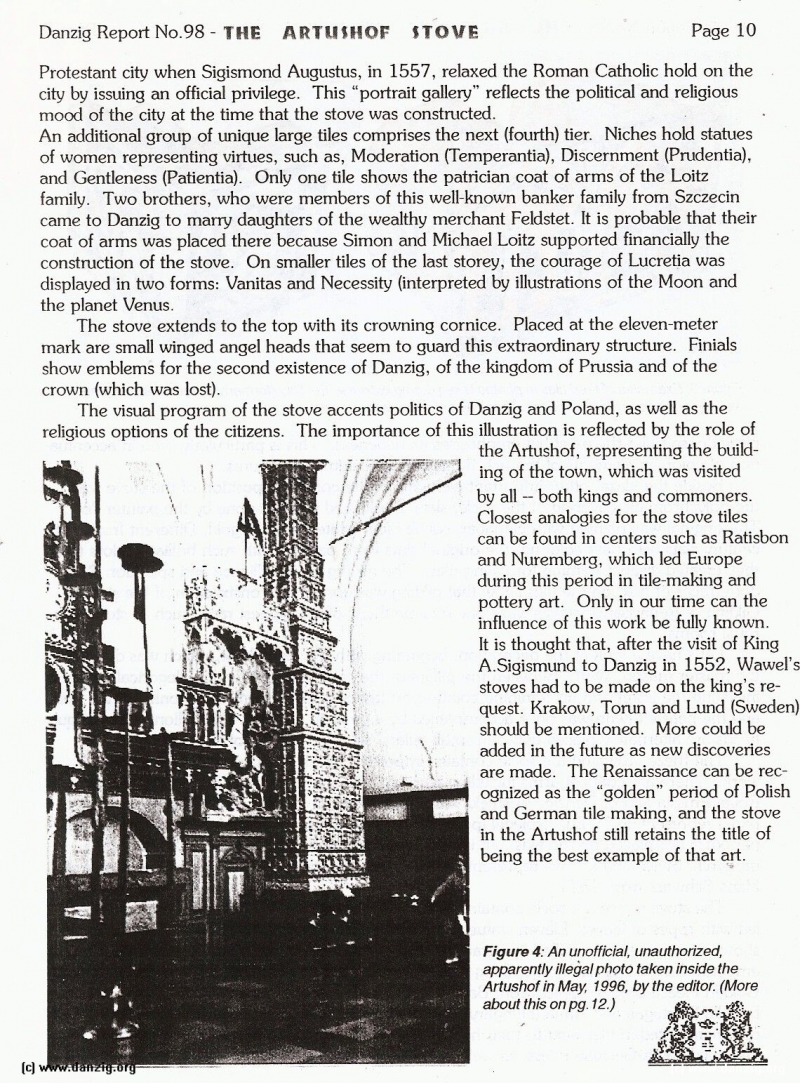
> THE ARTUSHOF STOVE
Protestant city when Sigismond Augustus, in 1557, relaxed the Roman Catholic hold on the city by issuing an official privilege. This “portrait gallery” reflects the political and religious mood of the city at the time that the stove was constructed.
An additional group of unique large tiles comprises the next (fourth) tier. Niches hold statues of women representing virtues, such as, Moderation (Temperantia), Discernment (Prudentia), and Gentleness (Patientia). Only one tile shows the patrician coat of arms of the Loitz family. Two brothers, who were members of this well-known banker family from Szczecin came to Danzig to marry daughters of the wealthy merchant Feldstet. It is probable that their coat of arms was placed there because Simon and Michael Loitz supported financially the construction of the stove. On smaller tiles of the last storey, the courage of Lucretia was displayed in two forms: Vanitas and Necessity (interpreted by illustrations of the Moon and the planet Venus.
The stove extends to the top with its crowning cornice. Placed at the eleven-meter mark are small winged angel heads that seem to guard this extraordinary structure. Finials show emblems for the second existence of Danzig, of the kingdom of Prussia and of the crown (which was lost).
The visual program of the stove accents politics of Danzig and Poland, as well as the religious options of the citizens. The importance of this illustration is reflected by the role of the Artushof, representing the building of the town, which was visited by all -- both kings and commoners. Closest analogies for the stove tiles can be found in centers such as Ratisbon and Nuremberg, which led Europe during this period in tile-making and pottery art. Only in our time can the influence of this work be fully known. It is thought that, after the visit of King A.Sigismund to Danzig in 1552, Wawel’s stoves had to be made on the king’s re quest. Krakow, Torun and Lund (Sweden) should be mentioned. More could be added in the future as new discoveries are made. The Renaissance can be recognized as the “golden” period of Polish and German tile making, and the stove in the Artushof still retains the title of being the best example of that art.
Figure 4: An unofficial, unauthorized, apparently illeial photo taken inside the Artushof in May, 1996, by the editor. (More about this on pg. 12.)
Danzig Report Nr. 98 - January - February - March - 1998, Page 10.
Hits: 1872
Added: 20/05/2015
Copyright: 2024 Danzig.org

